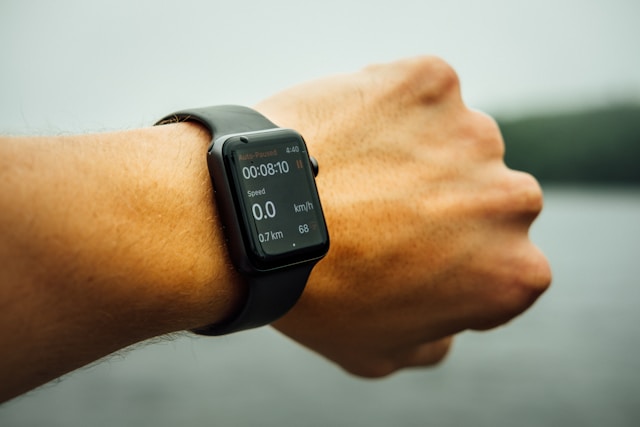How are businesses to help keep their pool of employees healthy, engaged, and on the move in today’s high-pressure work environment? What new tools, aided by a shifting technological backdrop, will be developed to help in ways that better support and personalize employee well-being?
How might companies take advantage of such technological advancement to design a holistic wellness program that does much more than just physical health, but also mental, emotional, and even financial well-being?
Given that organizations are working toward a healthier workforce that can bounce back faster, how is technology being used to forever change corporate wellness programs?
How Corporate Wellness Programs Have Evolved
Corporate wellness programs have evolved. They now include more than just gym memberships and smoking cessation. They are now comprehensive health management strategies. Now, they address physical, mental, emotional, and financial health. Additionally, technology has boosted their reach and impact.
Corporate wellness programs provide various types of advice to employees to support their overall well-being. This includes dietary intake advice, where employees receive guidance on nutrition and healthy eating habits.
They also provide advice on supplements, recommending specific vitamins and minerals to address individual health needs and deficiencies. Employees might be advised on the benefits of ashwagandha supplement to help manage stress and improve overall health. Advice is also given on omega-3 supplements to support heart health and enhance brain function. Probiotics are also recommended to improve gut health and boost the immune system.
These programs aim to provide holistic support, helping employees achieve better health outcomes through personalized and evidence-based strategies.
Health and Wellness Portals
These wellness portals are single one-stop shops from which workers may access a package of well-being tools and resources. Most wellness portals offer, but are not limited to, health risk assessments, educational content, fitness programs, and wellness challenges. The employees could track progress by setting goals and getting personal advice.
Many health and well-being portals can also be integrated with wearable devices and other health apps. This integration allows for comprehensive monitoring of an employee’s health needs. Such integration makes data synchronization easy and provides complete health monitoring.
Wearable Devices and Fitness Trackers

The most striking use of technology in corporate wellness today is the huge adoption of wearable devices and fitness trackers. Devices track the physical activities of employees, heart rates, sleeping patterns, and other pieces of information.
Wearables, by giving real-time information to workers, enable leading a healthier life and making informed decisions around well-being. It also lets employers come up with fitness challenges and reward good health.
For example, businesses can organize step-count challenges and reward employees for reaching their daily targets of fitness. This builds a sense of togetherness within a company but also a culture where health and well-being become a serious issue in the workplace.
Telehealth and Virtual Wellness Services

It changed how employees received healthcare and wellness resources with the advent of telehealth and virtual wellness services. It is easy to engage with health professionals from any location through telehealth platforms, which has eliminated a need that previously required loads of time: visiting the clinic.
Virtual wellness services—online fitness classes, mental health counseling, coaching on nutrition—are far easier and more flexible ways to help employees take better care of their well-being. They are available in the comfort of employees’ homes, hence making them easier to follow while keeping up with their demanding work schedules.
Mental Health Apps and Digital Therapy
Mental health has been an integral part of corporate wellness programs, and technology has surely played its role in addressing this one particular component.
Apps for mental health provide several tools to employees to help them manage stress, anxiety, and depression. These apps assist through guided meditation, relaxation exercises, and cognitive behavioral therapy techniques for mental well-being.
Digital therapy platforms connect employees with licensed therapists via text, audio, or video sessions. This access to professional support ensures all staff receive timely, discreet care for their mental health—and helps drive a healthier, more productive workforce.
Customized Wellness Programs
Personalization of corporate wellness programs according to the interests and needs of individual employees has been made possible through technology. Companies can engage in wellness initiatives by making use of data analytics and machine learning algorithms to understand facts about health behaviors.
For example, individualized wellness programs can provide an employee with specific exercise routines, dietary plans, and techniques to manage stress based on health data and the aims given. Customization in this respect enhances engagement and participation—workers are more likely to adhere to wellness activities if they suit their interests and needs.
Gamification of Wellness Initiatives
Gamification has become a key tool in corporate wellness. It makes wellness activities fun and is driven by technology. Companies can now engage employees in wellness challenges. They also empower employees to track progress using game elements like points, badges, and leaderboards.
For example, wellness applications can incorporate functions that reward employees for daily workouts, attainment of weight reduction goals, or attendance at health seminars. All this competition helps build not only a sense of accomplishment but also serves to reinforce healthy behaviors over the long term.
Artificial Intelligence and Predictive Analytics

Artificial intelligence and predictive analytics are revolutionizing corporate wellness programs by giving proactive and preventive health measures. Such AI-powered tools can analyze enormous health data to come up with patterns and trends that predict possible health risks and provide ways for early interventions.
For example, predictive analytics can help identify which employees are most likely to develop a chronic condition like diabetes or hypertension and provide recommendations for personalized wellness programs that will help mitigate this risk. This proactive approach thus yields better health outcomes while at the same time reducing healthcare costs for the organization.
Virtual Reality and Immersive Experiences
Virtual reality is a new technology with huge potential in corporate wellness programs. With VR, highly engaging experiences can easily be developed with appreciable impacts on relaxation, stress reduction, and mindfulness.
Technologies of Virtual Reality in Corporate Wellness
| Technology | Description | Benefits |
| Immersive Meditation | Virtual reality creates immersive environments for guided meditation sessions. | Reduces stress and promotes mental well-being. |
| Virtual Fitness Training | VR-based interactive workouts and sports activities. | Enhances physical fitness and makes exercise more engaging. |
| Relaxation Experiences | VR provides virtual nature walks and tranquil environments. | Offers a sense of escape and relaxation, reducing anxiety. |
| Stress Management | Virtual scenarios for practicing stress-relief techniques. | Improves stress management skills and overall mental health. |
| Collaborative Spaces | Virtual reality creates collaborative workspaces for team activities. | Enhances teamwork and social interaction among employees. |
| Health Education | VR-based educational modules on health and wellness topics. | Provides interactive learning experiences for better health awareness. |
Financial Wellness Programs
Financial stress is a big part of employee well-being, and technology has allowed for the construction of holistic financial wellness programs. Such tools from financial wellness apps can help employees take more control over their finances, track expenses, and plan for the future.
These apps provide individualized advice on finances, budgeting, and investment strategies that help employee empowerment toward financial stability and security. Financial wellness programs can offer companies a way to decrease the levels of stress among employees and enhance their quality of life.
Social and Community Engagement
Technology has also bettered the social and community aspects of the corporate wellness program. Social platforms and online communities enable employees to connect with, share, and support each other in their wellness journeys. This creates a sense of belonging and fraternity that keeps them motivated and interested.
For example, companies can set up private social groups where employees can share wellness challenges, distribute healthy recipes, and celebrate successes. Building that sense of community gives a positive work culture and instills a value for collective well-being.
FAQs
- How are wearable devices transforming corporate wellness programs?
Wearable devices like fitness trackers monitor physical activity, sleep patterns, and heart rate, encouraging healthier lifestyles and facilitating fitness challenges.
- What benefits do telehealth services offer employees in corporate wellness programs?
Telehealth services provide remote consultations with healthcare professionals, offering convenience and accessibility for employees with busy schedules.
- How do mental health apps contribute to employee well-being?
Mental health apps provide tools for managing stress, anxiety, and depression through guided meditation, relaxation exercises, and cognitive behavioral therapy techniques.







